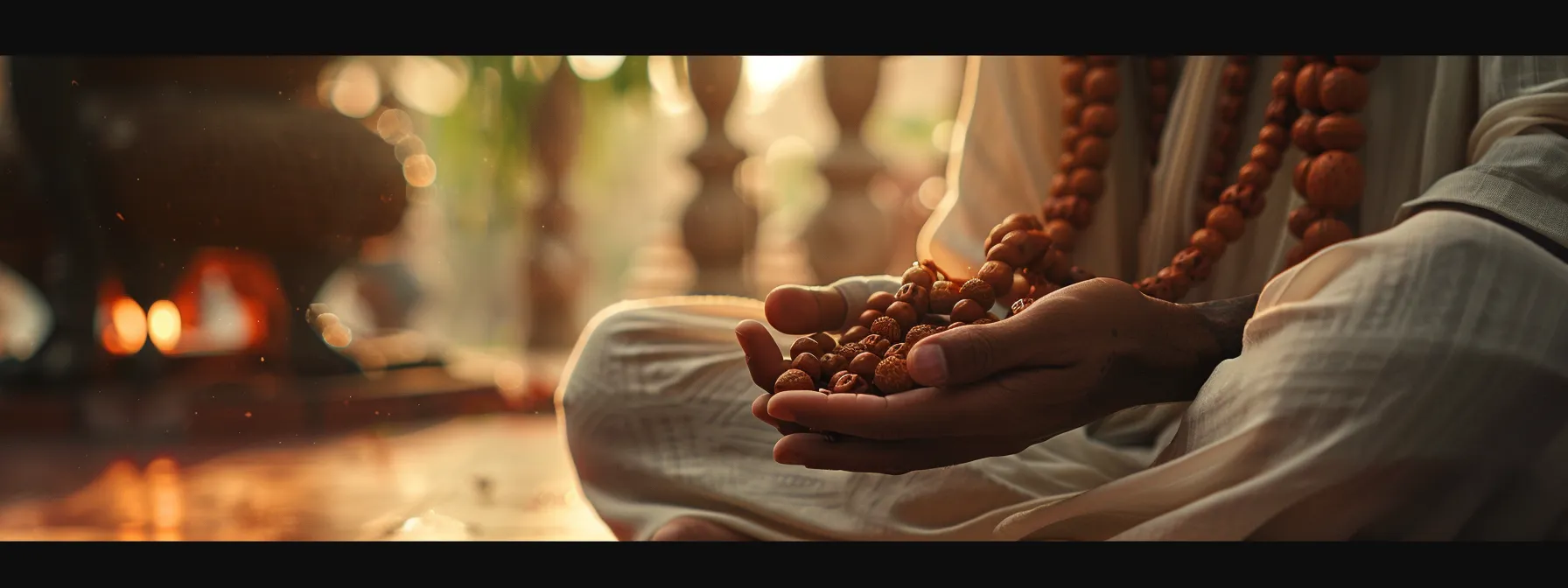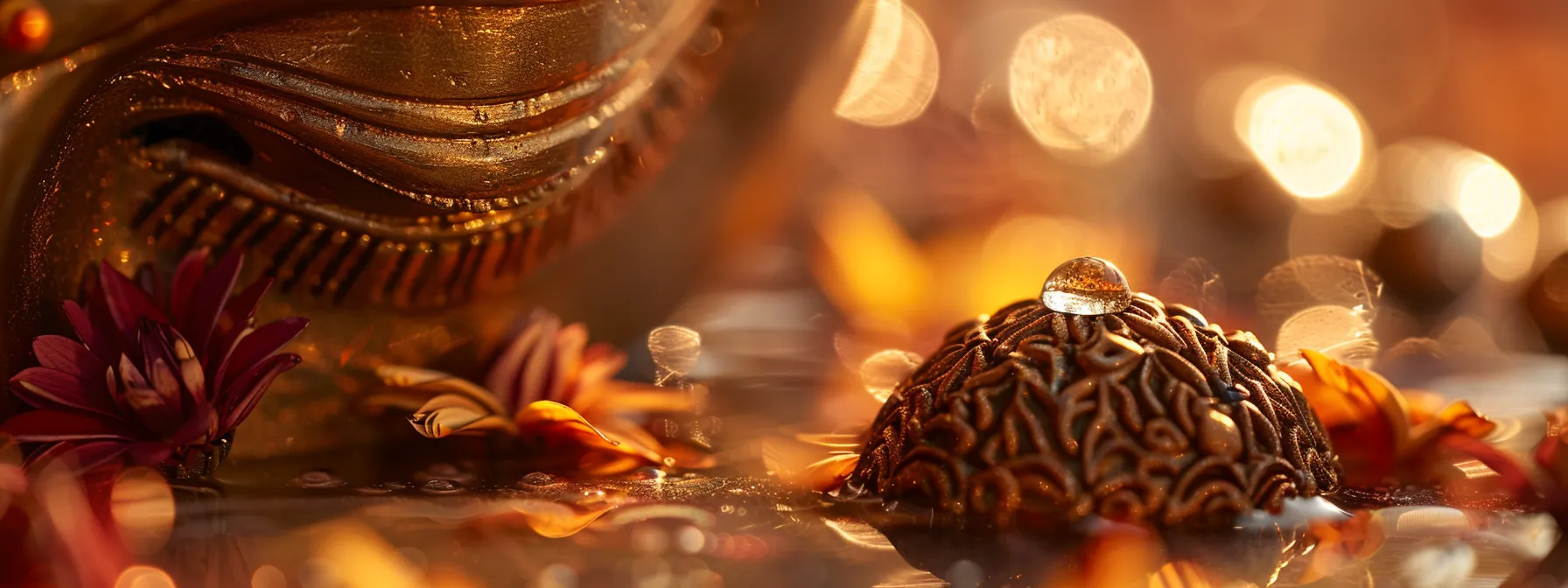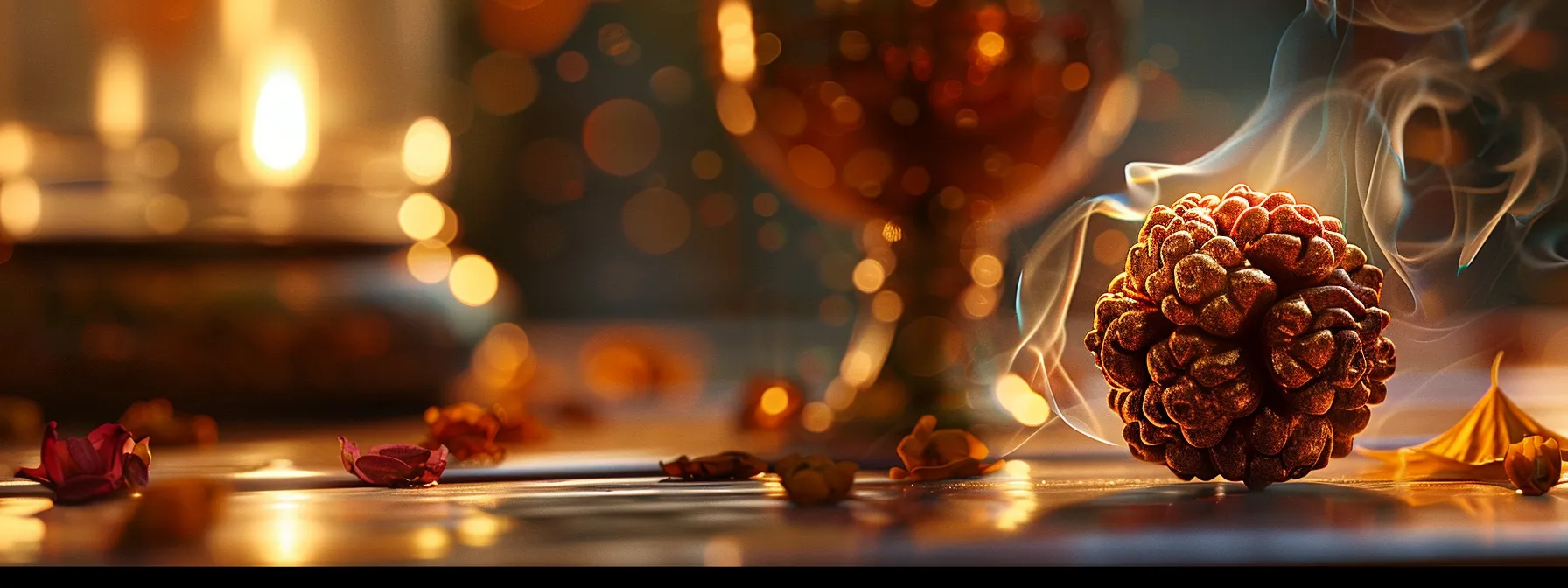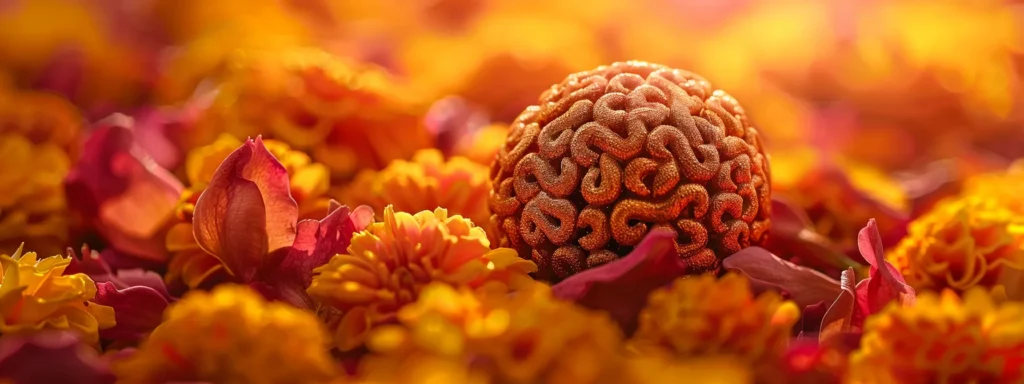Rudraksha Therapy
Exploring the Ancient Myths Surrounding Rudraksha Beads
Table Of Contents:
- Key Takeaways
- Origins of Rudraksha Myths
- The Legend of Shiva’s Tears and Rudraksha
- Cultural Beliefs Associated With Rudraksha Beads
- Debunking Misconceptions About Rudraksha Powers
- Rudraksha in Ancient Texts and Scriptures
- Modern Interpretations of Rudraksha Myths
Rudraksha beads have long been shrouded in myths and beliefs, sparking curiosity about their origins and significance. Did you know these beads, derived from the elaeocarpus angustifolius tree, are said to hold blessings and benefits in traditional medicine? This article will explore the legend of Shiva’s tears, the cultural beliefs surrounding Rudraksha, and how misconceptions about its powers can cloud understanding. Readers will gain valuable insights into the rich history and uses of Rudraksha, helping them appreciate its true value and significance in their spiritual journey.
Key Takeaways
- Rudraksha beads symbolize a deep spiritual connection to Lord Shiva and transformation
- These beads aid meditation by enhancing focus and emotional balance for practitioners
- The legend of Shiva’s tears connects Rudraksha to divine energy and personal growth
- Rudraksha has gained global recognition for its spiritual significance across various cultures
- Ethical sourcing is essential to preserve the integrity and sustainability of Rudraksha practices
Origins of Rudraksha Myths

The term “Rudraksha” derives from Sanskrit, meaning “the eyes of Rudra,” and connects deeply with Sadhana Products energy known as shakti. Historical references in texts such as the Devi Bhagavata Purana highlight the significance of these beads in meditation and prayer. Over time, myths surrounding Rudraksha, derived from the elaeocarpus fruit, have spread across various regions, enriching spiritual practices and enhancing concentration.
The Etymology of “Rudraksha“
The term “Rudraksha” is rooted in the Sanskrit language, translating to “the eyes of Rudra.” Rudra is often associated with Lord Shiva, a significant figure in Hinduism, symbolizing transformation and power. This connection emphasizes the spiritual importance of Rudraksha beads, linking them to yogic practices that promote wisdom and deeper meditation.
Traditionally, yogis have used Rudraksha beads during meditation to enhance focus and concentration. The act of wearing these beads is believed to alleviate stress and pressure, allowing individuals to redirect their attention inward. This practice has been a cornerstone in the spiritual journeys of many, helping them to achieve a state of tranquility and heightened awareness.
Beyond their aesthetic appeal, Rudraksha beads carry an aura of ancient wisdom. They are thought to assist in calming the mind, which is essential for maintaining a disciplined meditation practice. As individuals incorporate Rudraksha into their routine, they often find it easier to maintain a state of mindfulness, providing them the tools needed to navigate life’s challenges with clarity and purpose:
Early Historical References to Rudraksha Beads
Historical texts from ancient India mention Rudraksha beads as integral to spiritual practices among monks and practitioners in various Hindu temples. These beads served not only as a spiritual necklace but also as a symbol of connection to the divine. Monks believed that wearing Rudraksha created a protective aura, which facilitated deeper meditation and emotional stability, essential for their spiritual journeys.
In monasteries, Rudraksha beads were highly valued by gurus and disciples alike. These beads were often passed down as sacred gifts, signifying a bond between teacher and student. The emotional attachment to these beads added to their significance, fostering a deeper commitment to personal growth and understanding within the spiritual community.
Archaeological findings support the long-standing tradition of using Rudraksha beads in various rituals across different cultures. Historical accounts highlight their presence in meditation and prayer ceremonies, reinforcing their role in facilitating emotional balance and clarity. The enduring legacy of Rudraksha underscores its importance in spiritual well-being, seamlessly blending history with current practices in personal development.
How Rudraksha Myths Spread Across Regions
Rudraksha myths spread across various regions largely due to the influence of the spiritual texts, such as the Shiva Purana, which narrated the divine origins and superior qualities of these beads. As devotees embarked on pilgrimages to sacred sites, they carried these teachings and stories with them. This migration of faith allowed different cultures to adopt and adapt the use of Rudraksha in their own spiritual practices.
In South India, the reverence for Rudraksha grew as local communities integrated these beads into traditional rituals and temple practices. The association with Lord Shiva in regional myths reinforced their significance, fostering a connection between the physical and spiritual. As people sought courage and solace in their spiritual journeys, they increasingly turned to Rudraksha beads as a source of empowerment and focus during meditation.
The expansion of Rudraksha beliefs was further fueled by the establishment of monastic orders and spiritual leaders who traveled and shared their insights. Through these interactions, the stories and virtues of Rudraksha reached a broader audience, bridging cultural gaps. This storytelling tradition positioned the beads as essential companions on the path of spiritual growth, establishing them as symbols of strength and wisdom in diverse communities:
The myths surrounding Rudraksha have a depth that draws the curious in. Now, the tale of Shiva’s tears reveals a connection between sorrow and sacredness that is hard to ignore.
The Legend of Shiva’s Tears and Rudraksha

The legend of Shiva’s tears is pivotal in understanding the origins and significance of Rudraksha beads. This story illustrates how Shiva’s deep meditation harmonizes with the transformative power of his tears, which, according to ancient texts, morphed into sacred beads. These beads embody the essence of divine philosophy, influencing Hindu practices through rituals performed at altars and linked to devotees’ connections with Nandi, Shiva’s sacred bull.
The Story Behind Shiva’s Meditation
The story behind Shiva’s meditation is deeply rooted in Shaivism, where Lord Shiva embodies the essence of calm and focus. During profound meditation, he sought not only inner peace but also a way to transmit this tranquility to his devotees. This tradition emphasizes the importance of maintaining a disciplined practice, often utilizing a japamala, or rosary, made from Rudraksha beads, which serve as tools to aid concentration during meditation.
As the tale goes, while in meditation, Shiva’s tears fell to the earth, transforming into Rudraksha beads. This miraculous event symbolizes the intersection of divine energy and human experience. Many practitioners believe that these beads can alleviate stress and enable deeper emotional stability, fostering a stronger connection to the divine and enhancing their spiritual journey.
The function of Rudraksha beads in meditation resonates with the broader tradition of using sacred objects for focus and intention. By employing a japamala made from these sacred beads, individuals can engage in mantra repetition, reinforcing their meditation practice. This connection to Shiva’s tears not only enriches the spiritual experience but also serves as a reminder of the importance of serenity and mindfulness in the quest for personal growth.
Symbolism of Tears Transforming Into Beads
The transformation of Shiva’s tears into Rudraksha beads carries profound symbolism within Hindu spirituality. This metamorphosis exemplifies the connection between divine emotions and earthly practices. As these tears become sacred beads, they embody the essence of prana, or life force, bridging the gap between the spiritual and physical realms. Such beads are often used in meditation, enhancing the practitioner’s ability to focus and connect deeply with their inner self.
In the context of Prayagraj, a revered pilgrimage site, Rudraksha beads hold significant cultural value. Devotees collect these beads not only for their spiritual benefits but also as a reminder of the cycle of reincarnation and the journey toward enlightenment. The act of wearing or using these beads becomes a statement of one’s commitment to personal growth, aiding individuals in their quest for tranquility and deeper connection with the universe.
The use of Rudraksha as an herb with spiritual attributes enhances its importance in various rituals. Practitioners believe that these beads possess the power to stabilize energy, support well-being, and promote emotional clarity during meditation. As individuals engage with Rudraksha, they can harness the energy associated with Shiva’s tears, facilitating a more focused prayer practice and enhancing their overall spiritual experience.
Influence of the Legend on Hindu Practices
The legend of Shiva’s tears significantly influences Hindu practices by emphasizing the importance of meditation and spiritual connection. This story serves as a reminder of the transformative power of divine emotions, linking practitioners to the energy of Lord Shiva and Parvati. The beads derived from these tears are often used in meditation to awaken kundalini energy, facilitating deeper spiritual experiences that resonate with individuals pursuing enlightenment.
In the context of Hindu rituals, Rudraksha beads play a vital role in enhancing one’s connection to spiritual principles rooted in Hindu mythology. Practitioners, particularly in Tamil language-speaking regions, incorporate these beads into daily prayers, using them as tools for concentration during mantra recitation. This practice not only helps maintain focus but also enriches the practitioner’s overall journey towards self-realization, aligning their intentions with the teachings of Ayurveda and holistic well-being.
The symbolism attached to Rudraksha beads fosters a deeper understanding of the relationship between emotional energy and personal growth. As individuals engage with these sacred beads, they often report improved clarity and emotional balance. By integrating the legend of Shiva’s tears into their practices, devotees find motivation to cultivate mindfulness and spiritual discipline, leading to a more fulfilling life experience:
Shiva’s tears gave rise to the sacred Rudraksha, a powerful symbol of connection. As these beads found their place in hearts and homes, a tapestry of cultural beliefs began to weave around them, rich with meaning and significance.
Cultural Beliefs Associated With Rudraksha Beads

Rudraksha beads are steeped in cultural beliefs that highlight their healing properties and significance in spiritual practices. Many pilgrims incorporate these beads into their meditative routines, believing they harness energy that aids in chanting and focuses the mind. Variations in beliefs across different communities emphasize the role of monasticism and rituals, showcasing the diverse ways Rudraksha supports individual spiritual journeys.
Healing Properties Attributed to Rudraksha
Rudraksha beads are often attributed with significant healing properties, connecting users to the myth of their divine origin. Practitioners believe that these beads, once energized through a process known as “prana pratishtha,” can channel and amplify healing energy. Many practitioners express that wearing Rudraksha helps harmonize the mind and body, leading to overall well-being.
The energy associated with Rudraksha beads is thought to resonate deeply with specific organs, providing targeted healing benefits. For instance, different mukhi (facets) of Rudraksha beads correspond to various deities and body parts, reinforcing the belief in their healing effects. The connection to the goddess and divine energies is key for individuals seeking relief from stress, anxiety, or physical discomfort.
Faithful users of Rudraksha often report improvements in their health and emotional state, demonstrating the beads’ role in personal healing journeys. These experiences highlight the beads’ potential to enhance one’s spiritual practice while addressing physical and mental challenges. Incorporating Rudraksha into daily routines can guide individuals toward improved well-being and a stronger connection to their spiritual beliefs, as seen in the following table:
Role in Spiritual Practices and Rituals
Rudraksha beads play a significant role in spiritual practices, serving as an essential component in japa, the practice of repeating mantras or prayers. When practitioners use rudraksha as a matha, or rosary, they find a tactile connection that enhances their meditation experience. The ritualistic use of these seeds is believed to foster concentration and deepen spiritual engagement, making them invaluable tools for those seeking clarity and focus in their prayers.
The cultural significance of rudraksha extends to its association with deities like Brahma, symbolizing creation and cosmic order. Many individuals incorporate rudraksha beads into their daily rituals, believing that these beads serve as a bridge to the divine, promoting harmony and balance in one’s life. As a result, using these sacred seeds in spiritual activities elevates the practitioner’s experience, guiding them toward a heightened understanding of their spiritual path.
Moreover, practitioners often view rudraksha beads as more than mere gemstones; they see them as vessels of divine energy. The belief in their healing properties enhances their role in spiritual rituals, providing emotional stability and inner peace. By incorporating these beads into meditation and prayer, individuals report a greater sense of well-being and a stronger connection to their spiritual beliefs, allowing them to navigate life’s complexities with renewed strength.
Variations in Beliefs Across Different Communities
Variations in beliefs surrounding Rudraksha beads are evident across different communities, often influenced by local traditions and spiritual practices. For instance, devotees at the Iraivan Temple in Hawaii hold a deep reverence for these beads, using them in their daily puja rituals to enhance focus and promote mental health. In this context, Rudraksha beads serve as a tangible link to the divine, enabling practitioners to channel positive energy during prayer and meditation.
In regions associated with Shaivism, the connection between Rudraksha and the sacred lingam is particularly emphasized. Believers view the beads as vital tools for connecting with their spiritual essence, which enhances their meditation experience. This practice not only facilitates emotional healing but also reinforces a sense of mental balance, allowing individuals to engage more fully with their spiritual journey.
Additionally, the use of vibhuti, or sacred ash, marks another layer of belief in various communities. When combined with Rudraksha beads, it is thought to amplify their healing properties and further support mental health. Individuals who incorporate both elements into their daily rituals report improved clarity and emotional stability, highlighting the significance of these cultural beliefs in fostering a deeper understanding of spiritual connection and personal growth.
Rudraksha beads carry deep cultural significance, yet many cling to ideas that may not hold true. Next, let’s clear the air and uncover the real powers behind these sacred seeds.
Debunking Misconceptions About Rudraksha Powers

The exploration of Rudraksha beads encompasses scientific studies that address their purported benefits and clarify common myths associated with these sacred objects. This section will differentiate verified facts from popular misconceptions, examining the beliefs surrounding spirituality, the deity Shiva, and the use of these beads alongside crystals, such as sati. Additionally, it will touch upon ethical considerations in the commerce of Rudraksha, shedding light on responsible practices in this spiritual market.
Scientific Studies on Rudraksha Beads
Recent scientific studies on Rudraksha beads have aimed to verify the claims surrounding their benefits, especially in relation to spiritual practices. Research indicates that these beads, used traditionally in dharma and meditation, may possess qualities that help in enhancing focus and emotional balance. While anecdotal evidence abounds, rigorous testing is necessary to validate these findings and bridge the gap between belief and scientific fact.
Moreover, when examining Rudraksha‘s healing properties, studies have shown that their unique structure contributes to electromagnetic characteristics. This resonance is thought to impact the energy fields around the wearer, similar to how silk and sandalwood are believed to enhance spiritual experiences. As practitioners incorporate these natural elements into their rituals at shrines dedicated to the Buddha and other deities, understanding the science behind their use becomes essential for those seeking deeper insights into their practices.
Additionally, these scientific explorations extend to the ethical considerations surrounding the harvesting and commercialization of Rudraksha. With increasing demand, ensuring that Rudraksha is sourced responsibly helps preserve its sanctity and supports sustainable practices. By understanding both the spiritual and practical dimensions of Rudraksha, individuals can engage more meaningfully with these sacred beads and cultivate a balanced approach to their spiritual development:
- Scientific studies validate the effects of Rudraksha beads on focus and emotional stability.
- Unique electromagnetic properties may enhance spiritual experiences.
- Ethical sourcing supports the integrity and sustainability of Rudraksha practices.
Common Myths Versus Verified Facts
One common myth surrounding Rudraksha beads is that they possess magical powers that can instantly transform an individual’s soul or condition. Many individuals believe that merely wearing Rudraksha will lead to immediate enlightenment or spiritual awakening. In reality, while these beads have significant spiritual importance in Hinduism, they serve best as tools to aid meditation and focus, requiring consistent practice and dedication, such as engaging with the concepts of sannyasa, to foster personal growth.
Another misconception is that Rudraksha beads are exclusively linked to Lord Kartikeya or specific deities, leading some to think that their benefits are limited to certain spiritual paths. However, the use of Rudraksha transcends individual deities and is integrated into the broader practices within Hinduism. Practitioners find value in their ability to enhance meditation across different traditions, reinforcing their role as versatile companions in one’s spiritual journey.
Many also assume that Rudraksha‘s powers are derived solely from their physical properties, overlooking the essential aspect of intention behind their use. The transformative effect of Rudraksha beads leverages the practitioner’s focus on spiritual development, aligning with the deeper principles of Brahman. When practitioners integrate these beads thoughtfully into their routines, they can harness the energy they represent, contributing to improved mental clarity and emotional stability over time.
Ethical Considerations in Rudraksha Commerce
Ethical considerations in the commerce of Rudraksha beads are increasingly important as demand grows. Knowledge about sustainable harvesting practices must be shared to ensure that these sacred beads do not contribute to the depletion of natural resources. By emphasizing responsible sourcing, practitioners of worship in Hinduism can maintain the integrity and sanctity of these spiritual tools while honoring the deeper principles of monism that connect all beings.
Furthermore, connections with local communities involved in the cultivation and harvesting of Rudraksha can enhance the ethical landscape of this market. Supporting fair trade practices helps to improve the economic standing of these communities, allowing them to thrive while preserving their cultural practices. Engaging with these communities fosters a sense of respect and gratitude, reinforcing the true essence of Rudraksha‘s symbolism as one contemplates their personal journey through mantra and meditation.
Lastly, transparency in the marketing of Rudraksha beads is essential to combat common misconceptions about their powers. By educating consumers on the significance of intention behind the use of these beads, fervent practitioners can help mitigate unrealistic expectations surrounding miraculous transformations. This approach enhances the overall experience of worship, guiding individuals toward deeper understanding and practice while supporting ethical commerce in the spiritual marketplace.
Rudraksha has long captured the imagination, but its roots run deeper than modern beliefs. Ancient texts reveal a rich history that unearths the true significance of these beads.
Rudraksha in Ancient Texts and Scriptures

References to Rudraksha beads in Vedic literature highlight their connection to the divine, particularly through the association with Rudra. The Upanishads interpret these sacred beads as essential tools for meditation, enhancing focus of the mind. Furthermore, religious texts prescribe their use in prayer, particularly through mantras like “Om Mani Padme Hum,” underscoring their significance as prayer beads in spiritual practices.
References in Vedic Literature
References to Rudraksha beads in Vedic literature reveal their historical importance in spiritual practices, primarily among sadhus and practitioners seeking deeper connection and intuition. Texts emphasize the role of these beads in meditation and prayer, illustrating how they serve as tools for enhancing focus and emotional balance. The incorporation of Rudraksha beads into spiritual routines signifies an evergreen link between physical objects and higher states of consciousness.
In several ancient texts, including the Upanishads, Rudraksha beads are described as facilitating the mental clarity needed for meditation. These scriptures highlight the beads’ ability to support practitioners in achieving a heightened state of awareness, thereby fostering a more profound understanding of the self and the universe. The beads have been a vital aspect of many sadhus’ journeys, often linking them to the spiritual realm with an emphasis on intuition and personal growth.
The symbolic nature of Rudraksha beads extends beyond their physical form, as they are regarded as a bridge to spiritual enlightenment. Many ancient writings mention their usage during rituals and ceremonies, underscoring how these beads play a crucial role in connecting the practitioner with divine energies. As individuals engage with these sacred beads, their intention aligns with the spiritual teachings encapsulated in Vedic literature:
Interpretations by Ancient Scholars
Ancient scholars have extensively documented the significance of rudraksha in various texts and scriptures throughout the history of India. Their interpretations highlight the connection between rudraksha beads and the pursuit of peace and spiritual growth. Renowned writings like the Puranas reference the transformative power of these beads, illustrating their use as a garland in meditation practices, where they serve as vital tools for enhancing concentration.
The symbolism attached to rudraksha in these scholarly interpretations underscores its role as a divine bridge for practitioners seeking tranquility. By employing rudraksha in daily rituals, individuals cultivate a deeper connection with their spiritual essence, as discussed in various Puranas. This integration of rudraksha into spiritual routines illuminates the essential nature of these beads in achieving inner peace.
Furthermore, ancient interpretations from scholars emphasize how rudraksha has been presented in the context of connecting the material world with the divine realm. The usages highlighted in scriptures reflect a cultural reverence for rudraksha that spans centuries. Such perspectives remind practitioners of the beads’ historic background, enhancing their understanding of how rudraksha is central to their spiritual journey:
Prescribed Uses in Religious Texts
In Hindu texts, Rudraksha beads are often prescribed as essential tools for achieving inner peace during meditation. Their use is deeply rooted in the belief that these beads, when incorporated into spiritual practice, help stabilize the mind and enhance focus. Devotees often turn to these beads while meditating by the Ganges, where they believe the sacred waters amplify the spiritual benefits of the beads.
Tibetan Buddhism also acknowledges the significance of Rudraksha in promoting spiritual well-being. Many practitioners utilize these beads during their rituals and prayers to maintain a connection with the divine. This practice not only reinforces their intention but also fosters a deeper sense of inner calm and clarity, aligning with the ancient teachings passed down through generations.
The prescribed use of Rudraksha in various religious texts highlights their role in personal transformation and spiritual growth. By integrating these beads into daily routines, individuals find a physical representation of their spiritual commitment. The enduring presence of Rudraksha in these texts serves as a reminder of its historical and cultural importance in aiding seekers on their journey toward greater inner peace and enlightenment.
Rudraksha holds a profound place in ancient wisdom, offering insights into the past. Today, its stories take on new meanings, inviting fresh interpretations and understanding in the modern world.
Modern Interpretations of Rudraksha Myths

Modern interpretations of Rudraksha beads reflect their evolving role in contemporary spirituality, highlighting their significance across global communities. These sacred beads foster a sense of bhakti, connecting practitioners to the divine and promoting harmony through their use in meditation. Furthermore, Rudraksha‘s presence in art and media today illustrates the mysticism surrounding them, reinforcing their timeless appeal and relevance in spiritual practices.
The Beads in Contemporary Spirituality
In contemporary spirituality, Rudraksha beads have gained recognition among Hindus and practitioners alike for their unique vibrations. These sacred beads are believed to enhance consciousness, facilitating a deeper connection during meditation. As individuals seek tranquility and clarity, they often incorporate Rudraksha into their practices, reinforcing their spiritual journey.
The connection between Rudraksha beads and traditional practices, such as Shaiva Siddhanta, plays a significant role in modern spirituality. Practitioners utilize these beads not only for their meditative properties but also as a means of honoring cultural heritage. By engaging with the historical significance of Rudraksha, individuals can deepen their understanding of meditation‘s impact on personal growth and well-being.
The use of ghee alongside Rudraksha beads is a common practice that enhances their spiritual effectiveness. Ghee is often used in rituals to purify and energize the beads, allowing practitioners to benefit from their powerful vibrations. This combination serves as a reminder that spirituality is deeply tied to physical practices, shaping one’s consciousness and leading to a more profound experience in meditation:
- Rudraksha beads enhance vibrations during meditation.
- They support a connection to Shaiva Siddhanta and cultural heritage.
- Using ghee with the beads amplifies their spiritual properties.
Popularity Among Global Communities
The popularity of Rudraksha beads has transcended cultural and geographical boundaries, becoming a significant element in various spiritual practices around the world. In Southeast Asia, these beads are embraced by practitioners of Buddhism, integrating them into meditation routines for their purported ability to enhance focus and connection to the universe. This shared admiration across different religions embodies a universal respect for the spiritual properties attributed to Rudraksha, showcasing deep-rooted beliefs in the beads’ transformative powers.
Global communities have increasingly adopted Rudraksha beads as a symbol of spirituality and personal growth, fostering a sense of belonging through shared rituals and practices. Many individuals from diverse cultural backgrounds use these beads in their daily lives, believing that they assist in emotional healing and mindfulness. This growing interest reflects a broader trend towards exploring ancient traditions, as more people seek deeper connections to their spirituality through tangible objects that represent their beliefs.
Moreover, the integration of Rudraksha into various cultural expressions—such as jewelry and art—enhances its appeal among those looking to connect with their spirituality in a modern context. As more people recognize the historical significance and cultural relevance of these beads, they contribute to a renewed conversation around self-discovery and well-being. The ongoing exploration of Rudraksha not only enriches individual spiritual journeys but also reinforces the interconnectedness of humanity’s search for meaning within the universe.
Rudraksha in Art and Media Today
In contemporary society, Rudraksha beads have gained significant attention within art and media, symbolizing spirituality and personal transformation. Artists and creators frequently incorporate these sacred beads into various forms of art, including jewelry and sculptures, often reflecting their connection to ancient traditions. Platforms like the Fimagine Homepage showcase such art, promoting the beauty and significance of Rudraksha as a spiritual tool that fosters a deeper connection to the divine.
The importance of Rudraksha beads is particularly highlighted during religious observances, such as Maha Shivaratri, where their popularity amplifies as devotees seek deeper connections with Lord Shiva. As a part of the rituals, these beads are often depicted in artwork emphasizing their role in meditation and the pursuit of moksha. Through this artistic expression, individuals can understand the spiritual narrative intertwined with Rudraksha‘s history and its relevance in today’s spiritual practices.
Moreover, the emergence of Rudraksha Therapy Products reflects the adapting perceptions of these beads in modern wellness practices. Many practitioners advocate for their use as supportive tools for emotional balance and mental clarity. By integrating Rudraksha into daily life, individuals address their spiritual needs while fostering overall well-being, aligning with the greater quest for harmony and peace in contemporary living:
- Rudraksha beads symbolize spirituality and transformation.
- Art and media highlight their relevance during Maha Shivaratri.
- Rudraksha Therapy Products support emotional balance and wellness.



